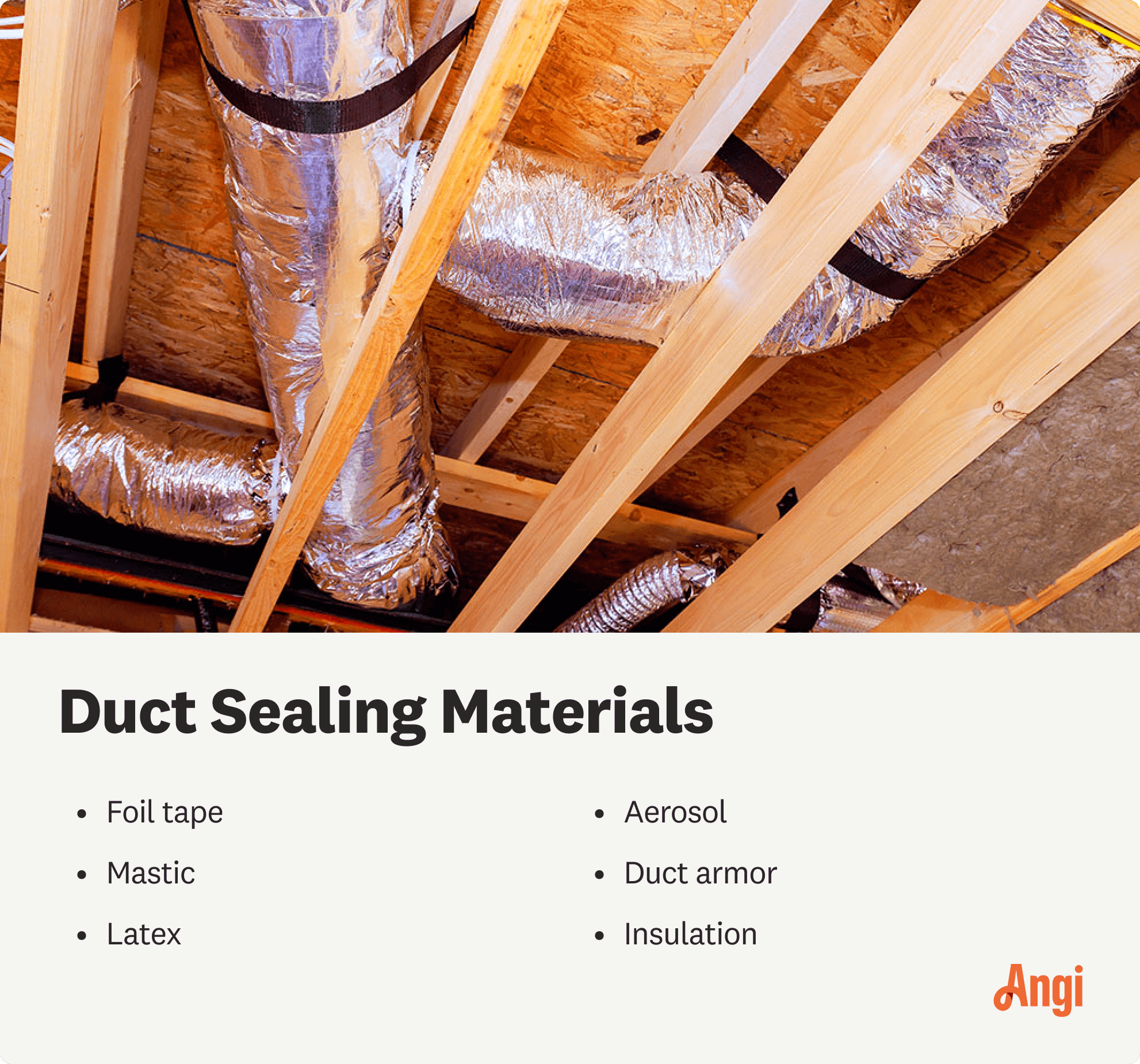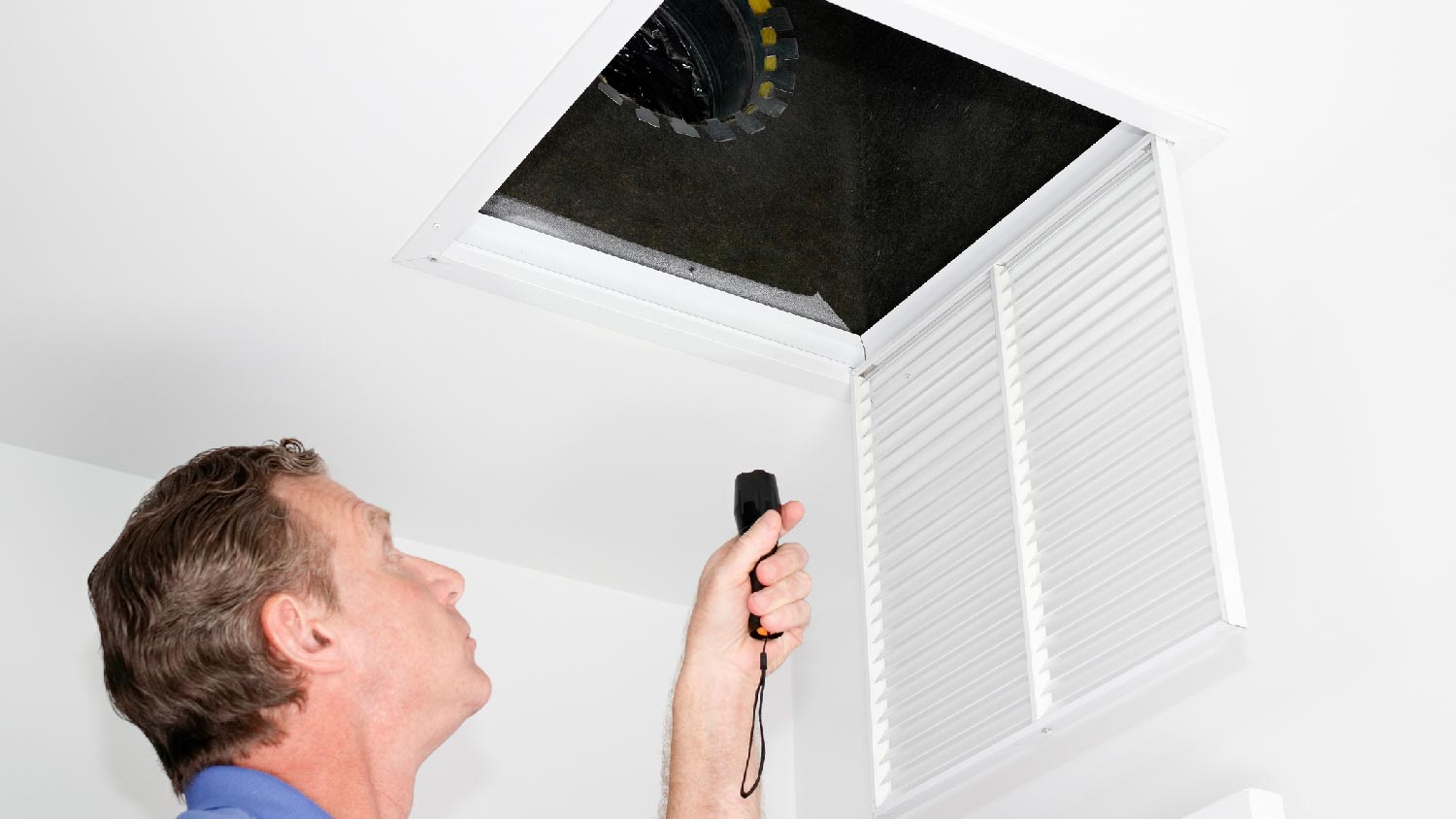
What you’ll pay in Columbus, OH, for furnace repairs depends on many factors. Here’s a breakdown of what can go wrong and the cost to fix those issues.
Don’t sweat condensation on your vents


DIY condensation fixes often require specialized tools and supplies, like duct brushes, mastic sealant, or shop vacuums.
Professional air duct cleaning costs around $270 to $510, but you can damage HVAC components, create leaks, or spread mold spores attempting to clean them yourself.
An air duct cleaning pro can safely remove dust, mold, and debris while ensuring your ducts are well-sealed and insulated.
Some municipalities require a pro to complete repairs to a home’s HVAC system to ensure they’re done correctly, with ductwork repair prices ranging from $200 to $2,100.
You probably don’t give your air vents much thought—that is, until they stop working correctly or they start dripping condensation. Condensation on air vents is a sign that something is wrong. But you can’t diagnose and treat the issue if you don’t know what to look for. This guide will explain why condensation forms on air vents and how to stop it from forming in the first place.
Your heats or cools air and your ductwork carries it through the house. Each room has a vent where the ductwork blows that treated air into the room to keep it comfortable. If your HVAC system is in good shape, you shouldn’t see condensation on your air vents.
However, if you do notice condensation, you’ll wonder what’s causing it and how to address it. Condensation can develop on air vents for several reasons, including the following:
Poor insulation
Excessive humidity
Dirty air filters
Blocked air ducts
Air duct leaks
Poor ventilation
The cost to remove condensation from air vents depends on the cause. In some cases, cleaning the air ducts can reduce the formation of condensation. Air duct cleaning costs $270 to $510, depending on the size and type of ductwork, the level of contamination, and the local labor cost. Other fixes like insulation or repairing damage could cost much more.
Tired of wiping condensation off your home’s air vents? Here’s how to stop condensation from forming in the first place.
Condensation forms when cool metal ducts come into contact with hot and humid air, so poorly insulated air ducts are one of the most common causes of condensation in ductwork.
Check your air ducts to see whether or not they are insulated. If they don’t have adequate insulation, you can learn how to insulate ductwork yourself or pay a pro to insulate the ducts. Ductwork insulation costs $1,000 to $2,700, or an average of $2,500.

Dirty HVAC filters can restrict airflow, preventing the AC unit from properly cooling and dehumidifying. The result is condensation in the ductwork and on the air vents. Replace your air filters every three months or as the manufacturer recommends to prevent condensation from forming.
Like a dirty air filter, dirty or clogged air ducts can prevent your HVAC system from functioning efficiently, causing condensation on the air vents. Learn how to clean air ducts yourself using a shop vacuum, extension hose, and a dryer vent brush. Be careful: Improper cleaning can cause damage to your ductwork, so consider hiring a pro if you’re not sure you can manage.

Leaky ducts can result in condensation on air vents. An unsealed duct lets air escape from the ductwork, and when that air meets cooler or warmer air outside the vent, condensation forms. This is a common cause of condensation on ductwork in crawl spaces.
Repair leaky ducts yourself with mastic sealer or metal tape over the leaking seams. Once you’ve sealed the leaks, add extra insulation to the air duct to prevent future leaks from forming.
Installing a dehumidifier can help prevent condensation on air vents—especially if you live in a climate with high humidity year-round. A dehumidifier extracts excess water from the air to create a drier atmosphere inside your home. The ideal indoor humidity level is between 30% and 50%.
A whole-house dehumidifier costs between $1,300 and $2,800 to install, depending on the size of your home and the model you choose. Plug-in models work well when the problem is mainly in one room.
One of the best ways to stop condensation on air vents is to keep up with HVAC maintenance. An annual HVAC inspection can help identify potential issues, like clogs, cracks, holes, or loose connections in the furnace or AC unit, so you can repair the problem before it becomes a larger issue.
An HVAC technician will also inspect your ductwork to determine whether any leaks or cracks in the ducts could cause condensation to form. An HVAC inspection costs between $70 and $500—much less than you’ll pay for significant HVAC repairs if you don’t catch potential issues early.

Prevention is key regarding condensation in your HVAC system, including your ductwork and air vents. Follow these tips to prevent condensation from forming on air vents or inside ducts.
Decrease the humidity level in the home by adding insulation or installing a dehumidifier.
Keep up with HVAC maintenance, including annual inspections and quarterly filter changes.
Replace the AC unit’s condensate drip pan every five to 10 years or if it gets rusty.
Don’t obstruct your air vents with furniture, rugs, or window treatments.
Check for leaks in your ductwork and repair them as soon as you notice them.
Some HVAC repairs, like replacing a filter or a damaged air vent cover, are easy enough to DIY. However, others are best left to a professional—and some municipalities even require a professional to complete repairs to a home’s HVAC system to ensure the repairs are done correctly.
Professional ductwork repair costs $200 to $2,100, depending on the type of repair and the type of ductwork. Patching a minor hole in the ductwork might cost as little as $15, while removing mold can cost as much as $3,350. That’s why regular inspections are so necessary; an HVAC tech will catch any mold-causing issues before it can grow in your ductwork.
From average costs to expert advice, get all the answers you need to get your job done.

What you’ll pay in Columbus, OH, for furnace repairs depends on many factors. Here’s a breakdown of what can go wrong and the cost to fix those issues.

Exposed ductwork can be a smart choice even beyond aesthetics. Fortunately, exposed ductwork costs are relatively low, and easy access keeps repair costs to a minimum.

Getting AC and furnace replacement done at the same time can lead to huge benefits for your wallet and your home. Here’s everything you need to know.

Figuring out how to eliminate ductwork noise may require anything from replacing the ducts to changing the filter. Learn more about fixing this issue.

Not sure who to hire to install radiant floor heating? Learn which pros handle radiant floor heating installation and how the work comes together.

If you’re thinking about an alternative to a traditional HVAC system, you may want to consider a heat pump. Read on for more about heat pump systems.